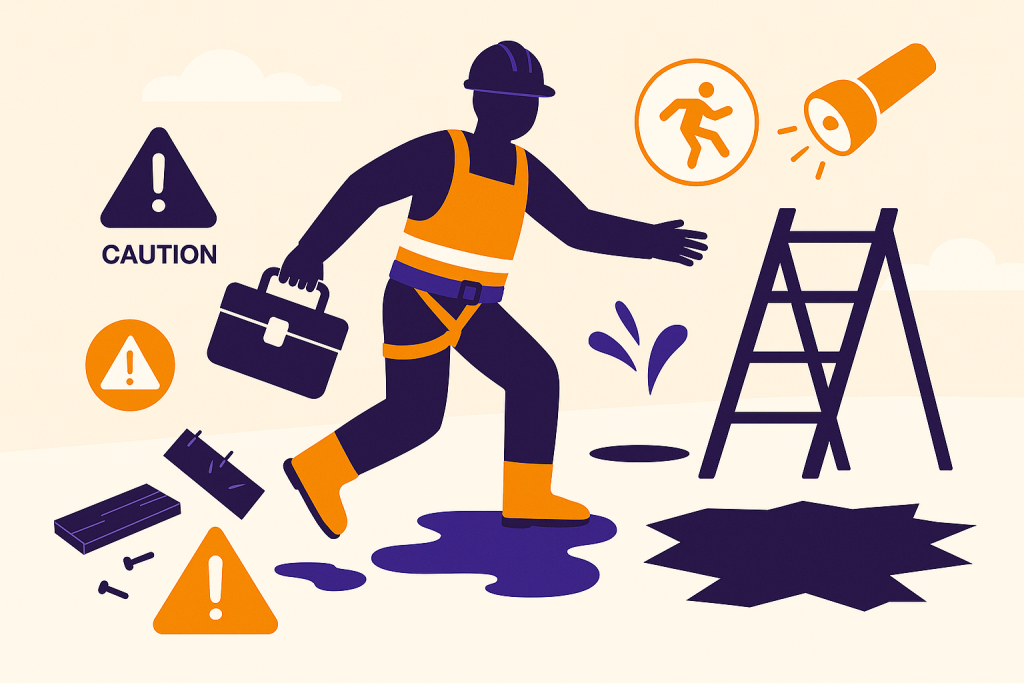
Working in disaster response and cleanup is demanding — and dangerous. One of the most common causes of injury during this type of work is slips, trips, and falls. Wet surfaces, debris, unstable ground, and damaged structures all create serious hazards.
The good news is that most of these accidents are preventable with the right precautions.
Employer Responsibilities for Worker Safety
✔️ Plan Ahead
- Create a disaster response safety plan before beginning any work.
- Make sure every worker knows the plan.
✔️ Inspect the Worksite
- Identify existing and potential hazards.
- Check for wet surfaces, unstable floors, holes, and debris.
✔️ Provide the Right PPE
- Slip-resistant footwear (like rubber-soled boots).
- Gloves for better grip on ladders and railings.
- Hard hats for head protection.
- Fall protection gear (harnesses, lanyards) for elevated work.
✔️ Train Workers
- Teach workers how to spot slip, trip, and fall hazards.
- Show how to use PPE correctly and prevent injuries.
Simple Ways to Prevent Slips, Trips, and Falls
- Avoid walking on wet, muddy, or slippery surfaces whenever possible.
- Wipe off wet boots regularly to improve traction.
- Use flashlights or helmet lights to spot holes, debris, and hazards — especially in low light.
- Always inspect the surface before stepping on it. Check for holes, weak spots, or instability.
- Never carry items in your hands when climbing ladders. Use tool belts or backpacks to keep hands free.
- When working near unprotected edges, always use fall protection.
- Use hands-free communication devices to report hazards and stay in contact with your team.
Important Reminder
If you ever doubt the safety of an area or task, stop immediately and notify a supervisor. No job is worth an injury.
Conclusion: Safety First, Always
Disaster response is critical work, but it shouldn’t come at the cost of your health. With the right planning, equipment, and habits, slips, trips, and falls can be avoided — keeping you and your team safe throughout the job.